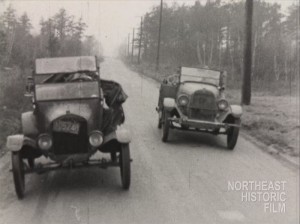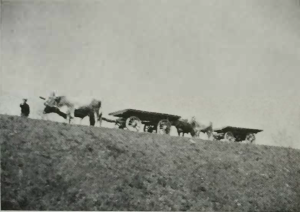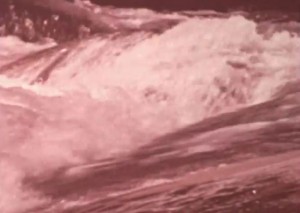"A travelogue depicting the characteristics and life of this South American city. From the star, upon landing at the airfield in Rio, good photography is noted throughout the film." PSA Journal, Dec. 1955, 37.

"A fender-bender drama calling for driving the cars up and down crashing into each other and trying to force each other off the road." oldfilm.org

"doc. a fantasia"/avant-garde documentary Risveglio, regista Vittorio Cossato, collaboratore tecnico Antonio Marzari. Il film presenta in una successione di inquadrature rigorosamente fisse, il contrasto tra il passato e il presente espresso talora attraverso simboli (come nella prima parte l'uomo che, visto di schiena cammina per un terreno paludoso, triste e squallido) ma quasi sempre per visioni di natura, di nuove generazioni al lavoro nel traffico dei porti, delle strade e nelle adunate. Vi sono dei passaggi freschi e il film nel complesso non manca di una certa omogeneità ritmica. Awakening, director Vittorio Cossato, technical collaborator Antonio Marzari. The film presents, in a succession of rigorously fixed shots, the contrast between the past and the present, sometimes expressed through symbols (as in the first part, the man who, seen from behind, walks through a sad and bleak, marshy terrain), but almost always through visions of nature, of new generations at work in the traffic of ports, roads and rallies. There are some fresh passages and the film in its entirety does not lack a certain rhythmic homogeneity. —Il Ventuno 29 (Review of the G.U.F. of Venice), June 1935, p. 16
"'Ritual of the Dead,' is an old-fashioned thriller. The leading characters, that of the young man who murders rather promiscuously and the tattered mummy who returns to life seemingly to accuse the murderer after the latter has reason to believe he has safely escaped detection for his crimes are carried by the producer. The denouement of the story, which is just that we have here intimated, carries a real thrill" American Cinematographer, Jan. 1939, 16-17.
"The faded colours do not detract from this charming record of life in Preston, on the river Ribble. Children play in the street, women stroll in Avenham Park, and shoppers crowd an outdoor market. Community events and the bright lights of Preston at night complete this picture of life in the Lancashire town (now a city)." (BFI Player)

"This film takes the viewer through the formation and life of a river. From raindrops to rapids, this film shows freshwater and how it moves through our environment," via SUNY College of Environmental Science and Forestry.
"Item is a film production of a trip from Naples to Nice taken by Dr. Willinsky and his wife, Sadie. In the form of a travelogue, footage of landmarks, ancient ruins and the local population is interspersed with captions and maps that were added in by Dr. Willinsky to denote locations and offer context. Featured cities include, Pompeii, Salerno, Rome, Cannes, Antibes, and Menton. Footage includes shots of Vesuvius, images taken from a gondala ride in Venice, Venetian street performers, market scenes, cathedrals, children dressed in costumes for a carnival, and various local craftsmen at work. Sadie is occassionally spotted in the footage interacting with locals and with travel companions who are probably relatives or family friends." Ontario Jewish Archives.
"In Rizumu 1932 nen (Rhythm 1932, 9.5mm, 1932), Kaneko played with rhythm by means of editing, this time by thematizing a large construction site where he captured machinery and workers. While he did not use as many shots of short duration as he did in Kōkyōgaku, he meticulously combined close-ups with various shots of low and skewed angles. In his personal memo, Kaneko left only a one-sentence description of Rizumu 1932 nen, suggesting that the film reflected his effort to create a rhythmic composition by integrating themes and styles." - Noriko Morisue, "Filming the Everyday: History, Theory, and Aesthetics of Amateur Cinema in Interwar and Wartime Japan" (Yale University: PhD Dissertation, 2020): 110.
"Color film celebrating Turner's love for classic automobiles. Turner discovers an old road named Callao and becomes interested in exploring the dirt road with his classic Dodge. Film shares the history of the pony express in Utah." Church History Library.
Total Pages: 299